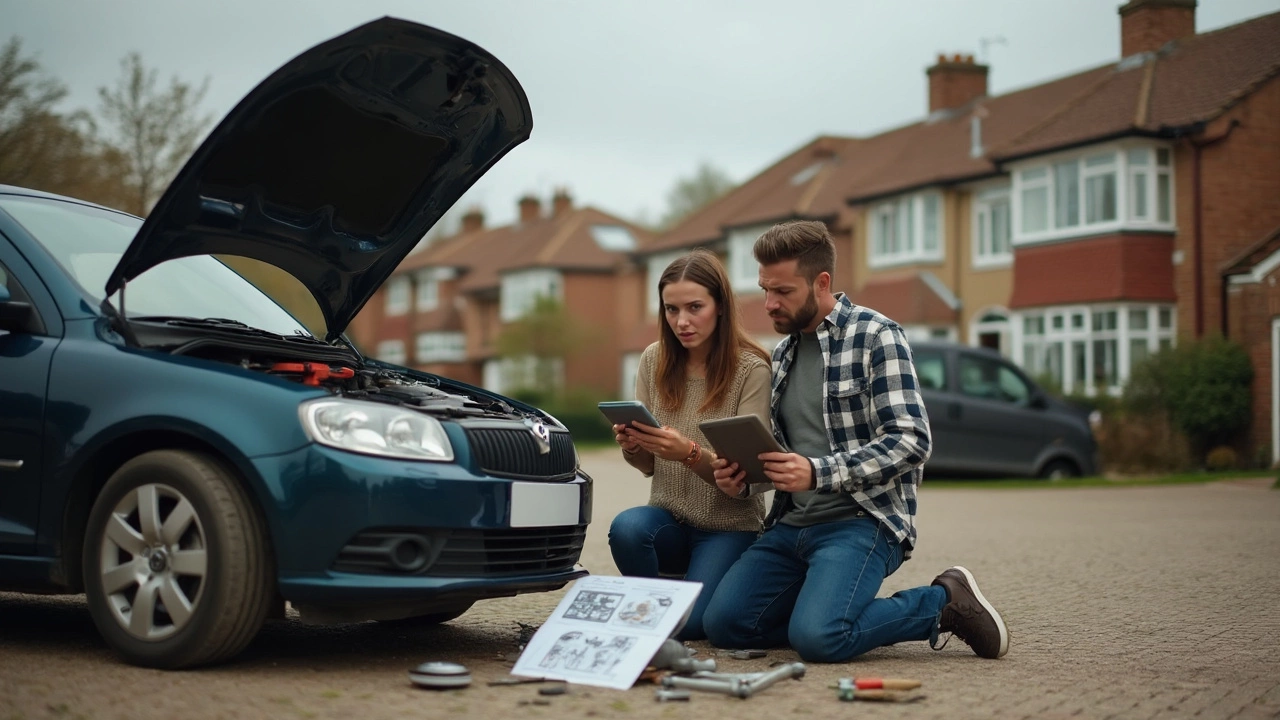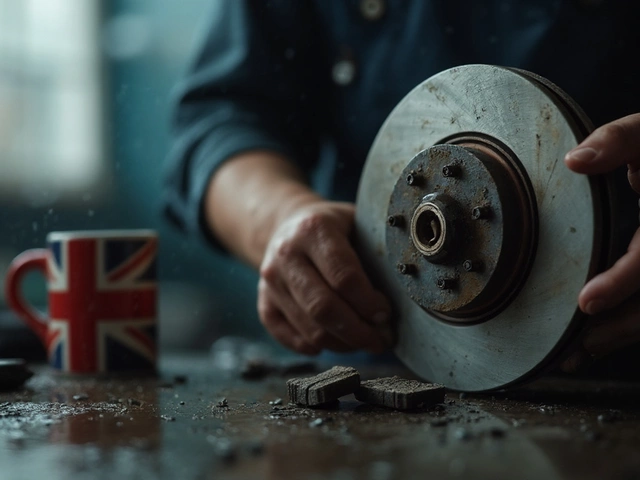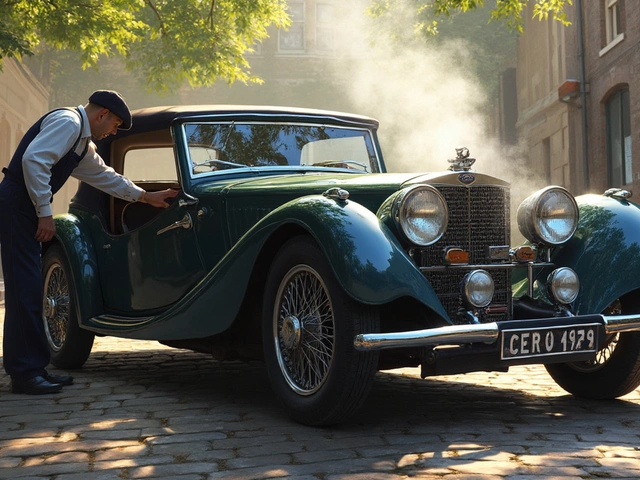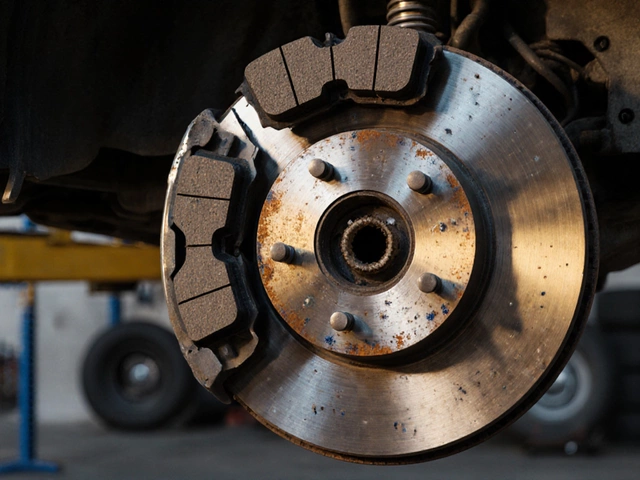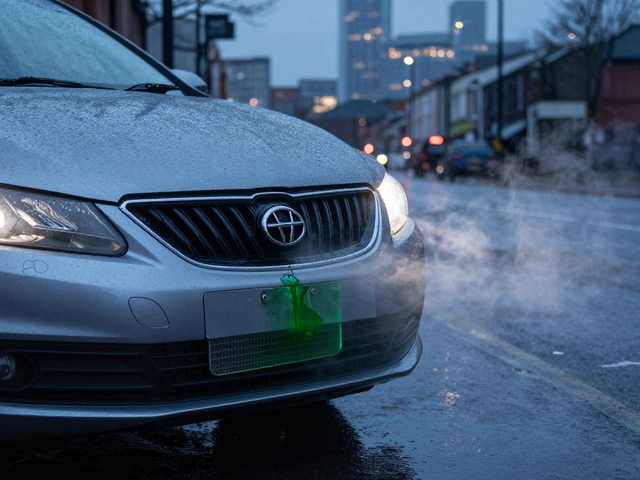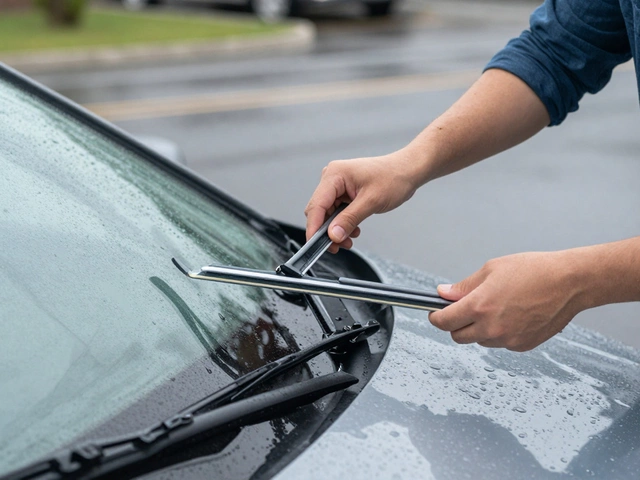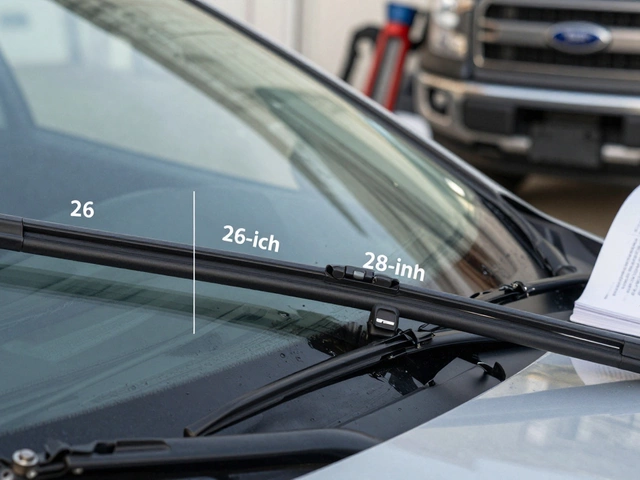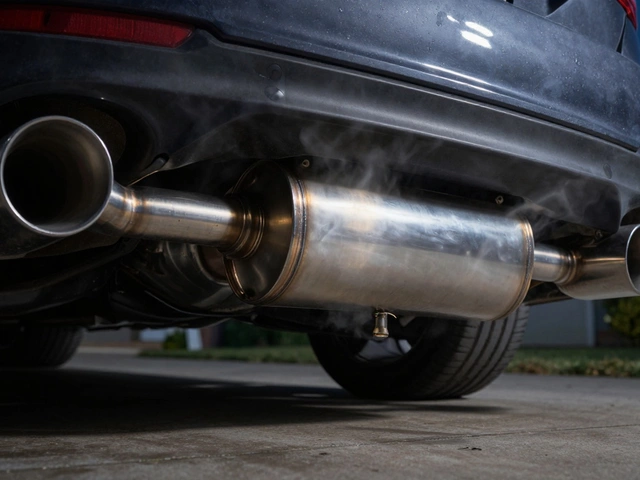If your daily drive feels more like riding a bumpy rollercoaster than cruising down the street, you're definitely not alone. Loads of people want a smoother, softer ride but have no clue where to start — or what actually makes a difference.
Here’s the thing: your car’s suspension isn’t just one part, it’s a mix of springs, shocks, bushings, and even tires. And not all changes cost a fortune or need a full garage setup. Tiny tweaks — sometimes as basic as swapping tire types or adjusting air pressure — can take the edge off every pothole you hit.
Most people assume they need fancy coilovers or to rip the whole suspension apart. Not always true. Sometimes solving that stiff, bouncy ride is a lot simpler and cheaper than you’d guess. Let’s break down what really works, skips the myths, and actually makes your car soak up bumps instead of sending them through your spine.
- What Makes Suspension Feel Stiff or Soft?
- Tires: The Surprising Game-Changer
- Shock Absorbers and Struts: What You Can Swap
- Springs: Lower Rates, Softer Ride
- Bushings and Other Small Parts
- Quick Wins and Common Myths
What Makes Suspension Feel Stiff or Soft?
Ever notice how some cars just glide over bumps while others rattle your teeth out? It’s mostly about how the suspension is set up. The main players are springs, shock absorbers (or struts), bushings, and your tires. Change one and you can feel it right away.
Springs are where it starts. If your car has stiff springs (these are called "high spring rate"), it won’t squish down much when you hit a bump. That makes the ride feel firm or even harsh. Softer (lower rate) springs let the suspension flex more, so you don’t feel every crack in the road. Most family cars go softer for comfort. Sporty cars? They’re stiff on purpose for better handling.
Then you’ve got shock absorbers. They’re there to control how fast the suspension moves up and down. A stiff shock slows things a ton, keeping everything tight but making bumps feel rougher. Softer shocks—or shocks set to a softer mode—let the wheels move more freely, which means more cushion for you.
Bushings are the small, squishy mounts connecting moving parts. Hard bushings (or ones that have gotten old and brittle) can pass through noise and harshness, while soft rubber bushings soak up some of that vibration.
Tires deserve special attention. Your tire’s sidewall and air pressure work like extra mini-springs. Low-profile, stiff-sidewall tires usually ride rougher. Even just dropping your tire pressure a few PSI can make your ride plusher—seriously, it works.
Here’s a quick breakdown to show which parts affect the feel the most:
| Component | Stiffness Impact |
|---|---|
| Springs | Very High |
| Shock Absorbers/Struts | High |
| Tires | Medium-High |
| Bushings | Medium |
So if you’re after a softer car suspension, focus mainly on these big four. The trick is finding a balance, so things stay safe and handle well but stop shaking you to bits every time you drive over a pebble.
Tires: The Surprising Game-Changer
Most people don’t realize how much tires matter when chasing a softer ride. Out of all your softer car suspension tricks, messing with your tires is hands-down the easiest and usually gives instant results. Think of them as the first line of defense against every pothole and crack in the asphalt.
If your car came with low-profile tires (those skinny ones with tiny sidewalls), you’re practically asking to feel every rock on the road. Taller, higher-profile tires give you way more cushion. The sidewall flexes, soaking up bumps before your suspension even gets involved. Swapping your wheels for slightly smaller ones and using tires with a taller sidewall often makes a world of difference.
- Go up on sidewall height – Check your car’s manual or trusted tire websites to see what taller size still fits safely. Just don’t go so big that the tire rubs the wheel well.
- Dial down tire pressure – Dropping pressure by a few PSI (within safe limits printed on your door jamb or in the manual) softens the ride. Don’t go below the minimum, or you’ll risk flat tires and faster wear.
- Avoid run-flat tires – These are stiff by design and can absolutely ruin comfort. If your car came with them, swapping to regular tires is usually a huge upgrade in ride quality.
One thing to watch out for: comfort-focused tires may not handle as sharp as sporty ones. If you mainly drive on rough city streets or highways, that’s usually a decent trade-off. For most people, switching tire types is the low-cost, low-effort move that brings the biggest comfort bump.
| Tire Type | Comfort Level | Handling/Performance |
|---|---|---|
| Low-profile | Low | High |
| Standard all-season | Medium | Medium |
| High-profile touring | High | Medium-Low |
People are often shocked at how changing just the tire profile or even adjusting air pressure can transform their car’s feel, before spending a dime on fancier suspension parts.
Shock Absorbers and Struts: What You Can Swap
This is where most folks get the wrong idea. People hear “upgrade your shocks” and think shiny new parts always mean a comfier ride. The truth? The type of shock absorber or strut you pick totally changes how your car handles bumps, but it’s super easy to buy the wrong thing if you don’t know the basics.
First, know that “sport” or “performance” shocks are often stiffer. They’re designed for better handling, not comfort. If a softer ride is the goal, look for OEM (original equipment manufacturer) or “comfort” shocks. Monroe, for example, labels some of their products specifically as “OESpectrum” for improved ride smoothness. KYB’s “Excel-G” line is meant to feel close to stock, not bouncy or stiff.
Basically, you want to avoid high-performance or heavy-duty shocks. Stick with brands and models that mention comfort or OEM replacement in their descriptions. Here’s how the options usually stack up:
- Softer car suspension means grabbing shocks labeled “OEM” or “comfort” (try Monroe OESpectrum, KYB Excel-G, Gabriel Ultra).
- If your car is older, don’t just swap one shock—replace all four for even results. Worn-out shocks at one end make the whole car feel off, no matter what you do.
- Check your car’s weight rating and don’t pick shocks meant for trucks unless you have one. “Heavy-duty” does not mean soft—it actually means the opposite for most cars.
"A lot of suspension comfort comes down to using the right shocks—go stiffer and you’ll feel every crack in the road; go softer and the whole car glides. It’s all about picking a shock built for what you want." — AutoZone Technical Team
Also, struts matter. If your car uses McPherson struts in the front (which most sedans and small SUVs do), those actually act as both a shock and a structural support. Same rule: look for comfort, not sport or track use.
It’s worth noting that sales data from Monroe shows their OESpectrum line sells 40% more in urban areas, where rough pavement is common. People aren’t just buying hype—they’re chasing relief from rough roads.

Springs: Lower Rates, Softer Ride
If you're looking for a real change in comfort, paying attention to your car's springs is key. Springs do the heavy lifting when it comes to absorbing bumps and smoothing out rough roads. The basic idea: the lower the "spring rate," the softer (and comfier) your ride.
Spring rate is just car-speak for how stiff the springs are. If the rate is high, they're tough to compress—great for sharp handling but not so great for comfort. Drop the rate, and you'll feel every jolt a lot less. Most everyday sedans and SUVs already use medium-to-soft springs, while sporty cars or trucks made for hauling lean much stiffer.
If you’re thinking of swapping springs, here’s what you should know:
- Softer car suspension springs (lower rate) make bumps almost disappear but can come with a bit more body roll in turns.
- Aftermarket spring sets are sold for specific cars—don't grab any random set off eBay. Match your make, model, and engine type.
- OEM (original) springs are best if you want softest ride possible. Skip "performance" or "lowering" springs, since they're always firmer.
- If you tow or haul heavy stuff, going too soft isn’t smart—your car could sag or even bottom out over big bumps.
Here’s a quick look at how spring rates compare between some typical setups:
| Type | Spring Rate (lb/in) | Comfort Level |
|---|---|---|
| Sports Car | 400+ | Firm/Stiff |
| Family Sedan | 150-250 | Medium/Comfort |
| Aftermarket “Soft” | 100-180 | Very Comfortable |
Just remember, if you go too soft, you might get some bounce over big dips or during fast turns. Most folks find a mild drop in spring rate gives a way nicer everyday ride without making the car feel like a boat. If you’re not sure, talk to a suspension shop—they see this stuff every day and can suggest what actually works with your setup.
Bushings and Other Small Parts
Most people forget about bushings when thinking about how to make their ride smoother. These little rubber or sometimes polyurethane cylinders act like cushions around your suspension's metal parts. When they’re worn out or made of rock-hard material, every bump or crack in the road transfers straight into the cabin, making things feel a lot rougher than they need to.
Factory bushings are usually made from soft rubber, perfect for everyday comfort but they wear out over time. If you drive a car that's more than a few years old, those original bushings might be dried out or cracked. Replacing them with fresh factory-style rubber bushings can immediately cut down on vibrations and soften the ride.
Some aftermarket upgrades push polyurethane bushings, claiming they last longer. That’s true, but the trade-off is a firmer, sometimes harsher ride because they're stiffer than rubber. If you’re chasing a softer car suspension, stick with good-quality OEM rubber. Save the ‘poly’ for sports cars or track toys, not comfy cruisers.
It’s not just about bushings, either. Don’t ignore little things like ball joints, sway bar end links, and even shock mounts. If any of these parts have too much play or are cracked, your suspension can’t do its best job. Sometimes, just tightening a loose sway bar link or swapping out tired shock mounts makes a surprising difference.
Want the numbers? According to a recent survey by a popular car repair site, over 40% of vehicles with rough rides were found to have worn bushings or loose small parts—not blown shocks or busted springs.
- Inspect your car’s bushings at least once a year, especially if you feel new harshness on familiar roads.
- Choose OEM rubber bushings for maximum comfort.
- Replace worn ball joints, end links, and shock mounts to support a smoother suspension.
- Pay attention to clunks or squeaks—that’s usually a red flag something small needs help.
In short, fixing these small, often-overlooked parts brings back the plush feel you’re missing—sometimes for way less money and hassle than bigger suspension upgrades.
Quick Wins and Common Myths
Before you start draining your wallet on fancy suspension upgrades, let’s get real about what actually makes your ride softer right now. Don’t underestimate the power of the basics.
- Tire pressure tweak: Under-inflated tires soak up more bumps. If you're running super high PSI, drop it a couple notches within the safe range listed on your door sticker. It makes more of a dent in ride quality than you might think.
- Tire type swap: Touring tires with a higher sidewall absorb way more vibrations than low-profile "sport" tires. If you’ve got skinny, tough-looking tires, that’s probably a reason every crack in the road feels brutal.
- Check your shocks: Worn-out shocks can make the ride feel hard and harsh. Sometimes just swapping old for new (and sticking to OEM-type rather than performance ones) is all it takes for a softer suspension.
- Lube those bushings: Dry, old bushings get stiff and squeaky. Hit them with some silicone spray or replace worn ones for a surprisingly comfy upgrade.
Here’s a myth a lot of people believe: “Heavier cars are always softer.” Not true. It all comes down to suspension design and tuning. Some lightweight cars ride way smoother than big SUVs, just because of smarter engineering.
"Changing tire pressure is the first and cheapest step anyone can take to smooth out a rough ride. Even two PSI difference can be felt instantly behind the wheel." — Dave Coleman, Engineering Editor at 'Car and Driver'
Another myth? Softening your suspension means losing all control or turning your ride into a boat. Wrong again. Most modern cars have a sweet spot where you can get smoother comfort without feeling like you’re floating off the road.
To sum it up, always start with the cheapest and easiest changes before digging into your wallet or getting under the car. You’ll be surprised how far small adjustments go toward a smoother, more enjoyable drive.
